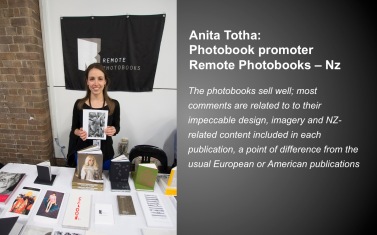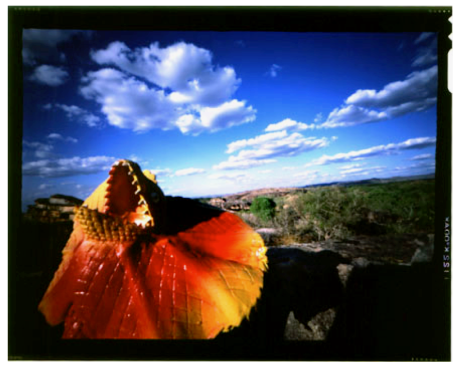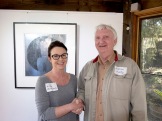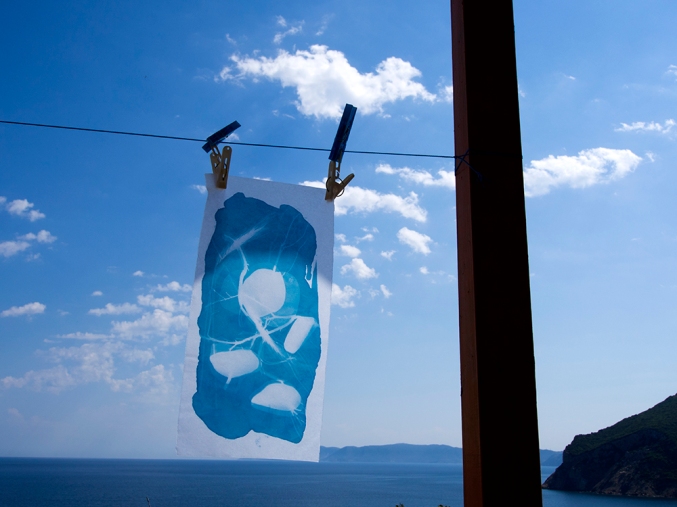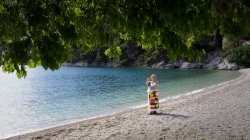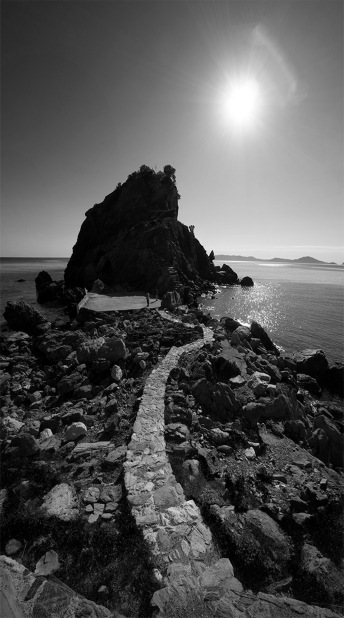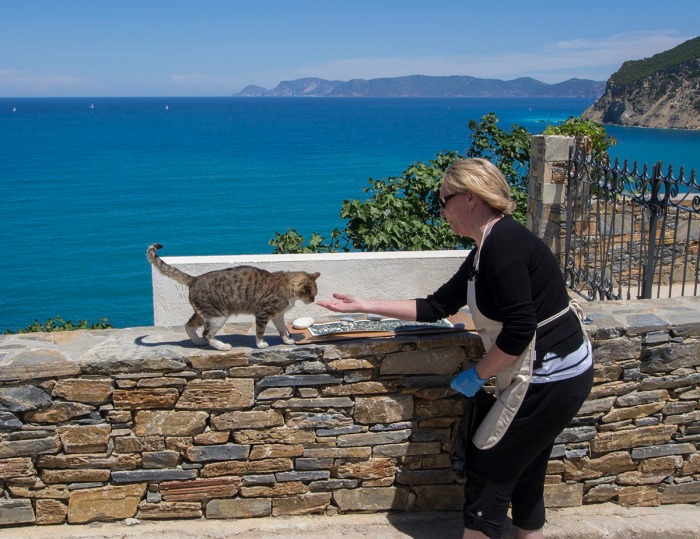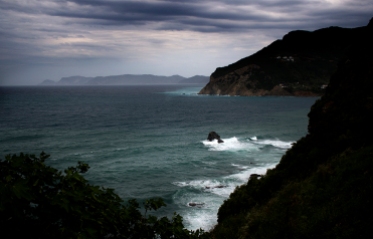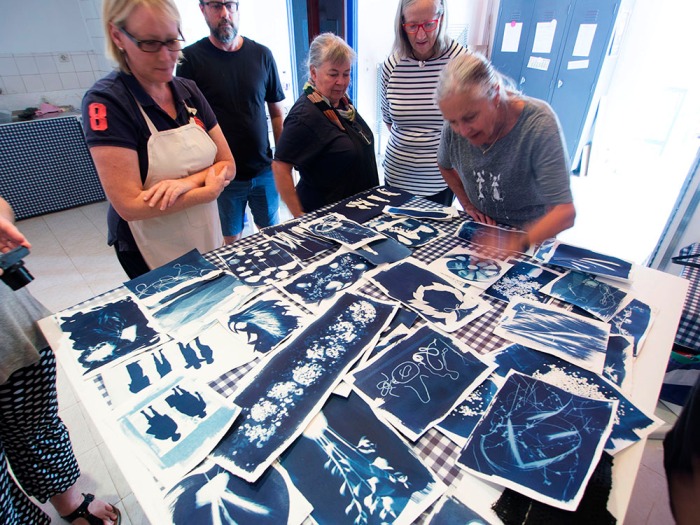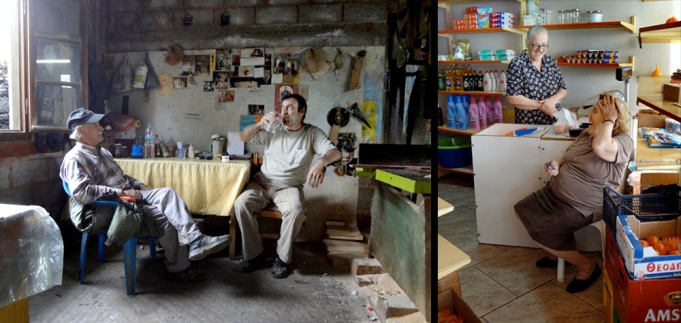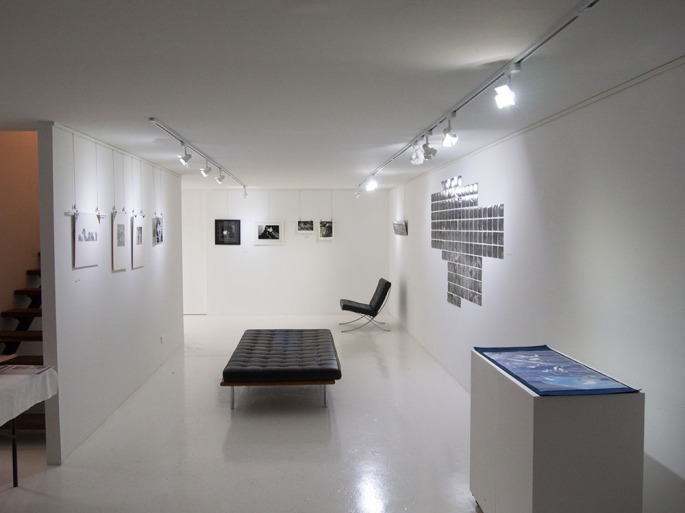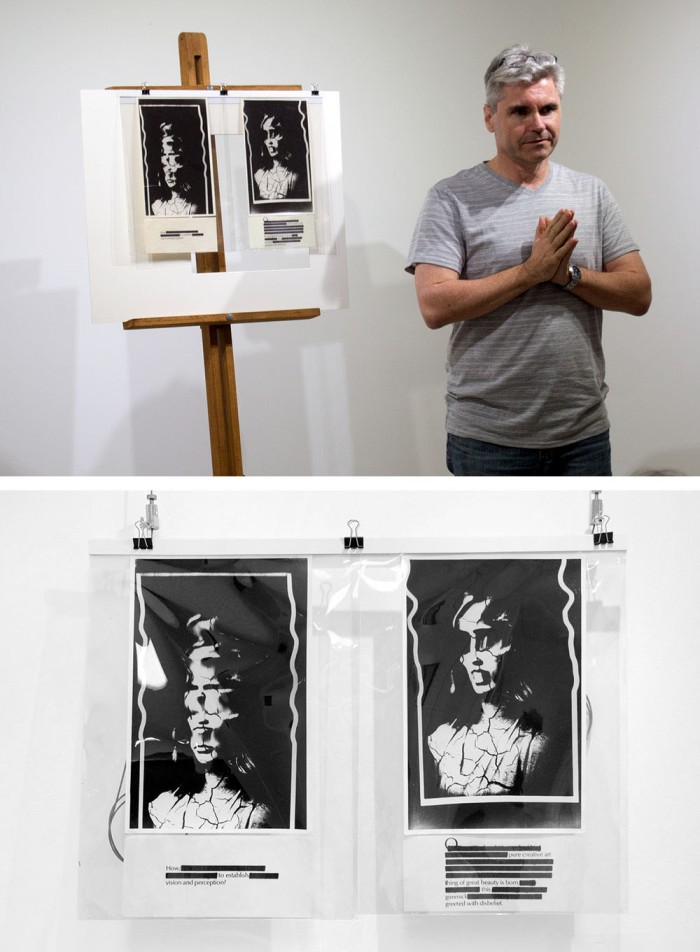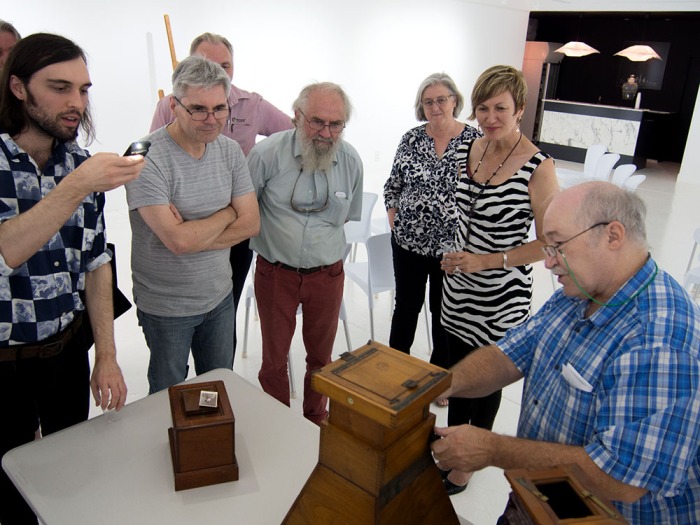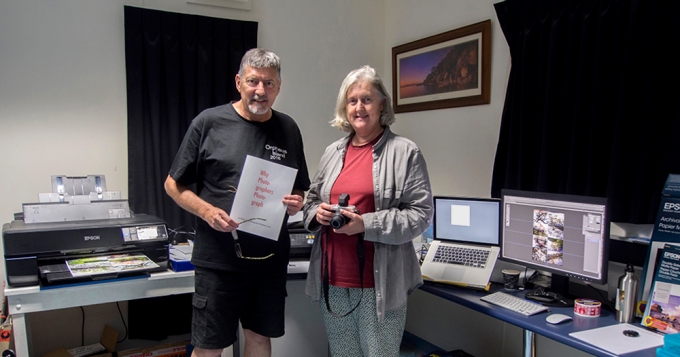Archive for the ‘Cooper+Spowart workshops’ Category
ADELAIDE HERE WE COME – BEST PHOTOBOOKS & WORKSHOP
The Australian and New Zealand Photobook Awards have been to Hobart, Canberra and Brisbane and now we are taking them to Adelaide.
The presentation of the books, a talk about the photobooks by Doug Spowart and a one-day workshop will be hosted by us at Adelaide’s Centre for Creative Photography.
.
COME AND SEE THE BEST AUSTRALIAN & NEW ZEALAND PHOTOBOOKS
On Saturday September 28 the books will be on show from 10am–4.00pm. The Official Launch, the announcement of the People’s Choice Award and a talk about photobooks by Doug Spowart will take place at 2.00pm.
There is no charge to view the books and attending the talk however we do request that you book via this Eventbrite link: https://tinyurl.com/y225btkx
ATTEND A ONE-DAY PHOTOBOOK WORKSHOP
On Sunday September 29 photobook road trip co-ordinators Victoria Cooper and Doug Spowart will present concepts and hands on practical exercises for working on photobook projects. These are designed to assist the photographer in distilling images from their archives and then structure them into an engaging narrative flow. The workshop includes practical work in hand-making photobook formats and preparing book ideas for Print-on-Demand output.
There is a charge to attend the workshop – Details of the workshop and booking information can be found on this Eventbrite Link: https://tinyurl.com/y2pnpbhu
.
.
Victoria Cooper & Doug Spowart acknowledge the support of MomentPro Photobooks and the Centre for Creative Photography in making this event possible.
.
.
.
CYANOTYPE IN AUSTRALIA @ MGA – An exhibition & Workshop
We are excited to announce an exhibition of the work of Australian cyanotype practitioners for World Cyanotype Day 2018 has now opened.
Over the last month we’ve been working with Stephanie Richter and Gillian Jones of Monash Gallery of Art in Melbourne to bring together the cyanotype works by artists from north Queensland to Tasmania to exhibit in the MGA’s ATRIUM GALLERY.
We also presented a one day masterclass on the cyanotype and the book.
The exhibitors are:
Adele Outteridge, Ann Vardanega, Chris Byrnes, Christina Harding, Danielle Minette, David Symons, Dawne Fahey, Deanna Hitti, Felicity Rea, Gael E Phillips, Gail Neumann, Jan Ramsay, Janis House, Kate Golding, LeAnne Vincent, Linsey Walker, Lloyd Godman, Lynette Zeeng, Mark Lourensz, Mel Brackstone, Mollie Bosworth, Raimond De Weerdt, Renata Buziak, Robyn Campbell, Shane Booth, Silvi Glattauer, Sue Clisby, Thomas Oliver, Trevor Foon, Stephanie Richter, Victoria Cooper and Doug Spowart.
A copy of the exhibition catalogue can be dowloaded ‘In Anna’s Garden’ CATALOGUE
A video of the gallery installation can be seen here…
.
THE STORY OF THE EXHIBITION from Victoria Cooper + Doug Spowart
For around 2 years we have been members of the World Cyanotype Day Facebook page and have followed the work and comments made by cyanotypists from all over the world. When the call went out about the 2018 World Cyanotype Day (WCD) we shared the post on our Facebook page with the message, ‘wouldn’t it be fantastic if we could have an exhibition of practitioners from Australia to celebrate WCD’. Within minutes our Facebook Friends started responding with supporting comments like, ‘WOW, I’d like to be a part of that!’ Within 24 hours about 20 ‘Likes’ and comments appeared – we then thought about how we could make it possible.
In September we were scheduled to be in Melbourne so we made some enquiries with a few contacts about the possibility of an exhibition space that we could consider for the project. Things went quiet for a while and we sent out a few follow up messages. Then came a response from Stephanie Richter, the Monash Gallery of Art’s Education & Public Programs Coordinator, that the Community Access space at MGA could be available. After consultation with the Director Anouska Phizacklea and the MGA team the go ahead was granted to mount the exhibition and present a masterclass in the process. An event team was formed consisting of Stephanie, Gillian Jones – a recent Master of Arts and Cultural Management student from Melbourne University with Vicky and myself.
A Facebook Group was established and people who we knew were practising cyanotypists were invited to join. Through our contacts in alternative and traditional photography we enquired about other cyanotype workers that we should be aware of to extend to them an invitation to contribute to the show.
In time documents outlining the project, conditions of submission and important aspects of the venue and the audience were generated and made available online. Some invitees were contacted via email, as they were not Facebook users.
The closing dates for submissions, delivery to the gallery and installation all had tight deadlines. The FB group was able to provide a rapid distribution of information, an ability to respond to questions and circulate the answers back to the group. Behind the scenes the event team connected via Facebook Messenger to plan, resolve and prepare the way for the exhibition. Early in September the works were received at the gallery and a 3-day installation took place by the event team supported by artist Deanna Hitti. The exhibition was opened on the 15th of September and will remain on show until the 21st of October.
In Anna’s Garden presents a diverse and vibrant community of cyanotype artists and photographers working in Australia. Although the exhibition is not a complete survey, it does represent a beginning in recognizing the practice of this process in Australia. Also planned is the continuation of an openly accessible ‘The Cyanotype in Australia’ Facebook page to provide a place for networking and the sharing of concepts, techniques and images with the local, national and international communities.
The growing popularity of this early photographic process could seem strange at a time when instant perfection is so easily achieved through digital technologies. Perhaps the allure for the cyanotype lies in its hand-made working methods and technologies along with the potential for capricious results that inevitably lead to an excitement in the discovery new ways of seeing. For many the emotional power of the cyanotype’s blue image continues to create new perceptions through visual expression and storytelling 176 years beyond its first discovery.
.
SOME IMAGES FROM THE EXHIBITION
.
.
.
.
.
CYANOTYPE: Working the ‘blues’ in Greece
.
The azure blue of the Aegean Sea perfectly matches the prussian blue of the historic process cyanotype. The ancient stories of Ulysses and Jason’s Argonauts lend themselves to the contemporary narratives that can be made through photography and the photobook. In May we sought to explore these creative possibilities through a collaborative workshop coordinated by artist Steph Bolt and Skopelos Works on Paper on the island of Skopelos located in the Sporades north-east of Athens.
Six participants worked with us over a two-week program of structured lectures, practical sessions and photo forays to explore the possibilities for image taking and art making on the island. Staying in the main town on the island we worked out of the purpose-built printmaking studio with a view out over rocky headlands, distant islands, blue waters and skies. The studio sits atop of the town next to the remains of a castle with steps and paved pathways leading to the harbour and the Paralia. Tourism is a significant industry for the island however its impact does not destroy a feeling of being within an authentic experience of Greece.
The workshops started with breakfast daily at 8.30am with a studio start at 9.00am. By 2.30pm the formal program finished enabling personal exploration of the diverse subject matter available. Everyday participant’s day concluded in the restaurants of the Paralia partaking in the culinary delights of rustic Greek food supported by ouzo, retsina and aspro krasi (white wine). We ate fantastic squid, octopus, anchovies, little fishes, rabbit, goat, traditional foraged foods like the succulent kritima, local cheeses, Skopelos pies and gyros. Some members of the group formed relationships with the restaurateurs and towards the end of each meal extra wine and special desserts were presented as gifts by the host.
At regular intervals in the program Steph and her husband Robin took us on photo adventures: to the ancient graves at Sendoukia for sunrise, the Roman bathhouse ruins of Loutraki, the hillside town of Glossa and the classic white rocky cliffs and beaches of the island. The island is also famous for providing the setting for the Bronson and Streep film, Mama Mia so we visited the famous church on the rock Agios Ioannis. As part of most of these forays we had more opportunities to dine in tavernas, coffee shops and seaside restaurants.
Key to the program was the concept of ‘place-making’, that is making photographs and forming them into themes and photo-essays that told of the personal experience of place by the photographer. The process of the cyanotype was explored employing traditional ‘shadow’ imprint of objects collected from the island to some very experimental work with multiple materials and exposures and double-sided printing. We worked not only with art papers but also with rice paper, various cloth materials event kitchen paper towelling. We had also gathered some special objects like a range Greek laces and linens, local rocks and a diverse range of plant material. Connecting direct photography with the cyanotype process was achieved on-site by the making of enlarged inkjet negatives.
Photobooks were developed at first as mini-book projects that could lead to online projects with MomentoPro software. MomentoPro supported the project by accrediting our program as part of the ‘Club’ services giving the participants 40% discount on their first book and 10% on each of their future books.
The participants were accommodated near the studio at the top of the town – one group had extensive views of the Aegean Sea sunrise with the other group overlooking the town. As mentioned earlier the distance to the shops and restaurants in the harbour required the negotiation of several hundred bespoke steps of local stone and concrete all with their leading edge painted white. The steps meandered past mainly two storied whitewashed houses with ornate doors and grilles. Ancient churches some built with reclaimed stones from other building provided an experience of place that was quite memorable. Coming home from shopping or dinner meant a steep climb up through the paths, sometime dodging motorcycles although many steps are so narrow that even they are footpaths alone. On one early evening return we encountered a church group with candles being led in a song procession with a Greek Orthodox priest leading the way – a memorable moment indeed.
The weather was very changeable requiring some program shuffles, as cyanotypes are direct sun exposures for many minutes. Ah! Today is sunny – we’ll make cyanotypes then… Once participants grasped the technique each took the process in their own directions. Many sophisticated books were made based on other workshop classes in book binding and finishing. Some went BIG making full sheet (55x76cm) cyanotypes.
At the beginning of each workday a review of the previous activities was undertaken. The specific needs of each participant could be covered and ideas shared.
On the final day each photographer presented their best work – what an amazing body of work that represented – although within hours each had said their goodbyes and had caught ferries off the island and were flying homeward. We were all jealous of Steph and Robin who have a house in the town and stay there for about half the year. Their knowledge of the island and networking with island people was invaluable for the success of the workshop. Works were shared and a folio set of eight small books were made in multiple so everyone ended up with a memento from each of other individual experiences …
All of us were touched by something special on the island – our photographs and books act as evidence of experience but also a touchstone to relive and share those experiences…
Here are some photos of the final presentations…
Copyright in the text and all photographs are the copyright of Doug Spowart+Victoria Cooper unless otherwise indicated. The copyright of the artworks is held by the artists.
.
UPDATE-SKOPELOS WORKSHOP: Join us on a Greek Island
.
IMAGINE – the inspiration for PHOTOGRAPHY on an Aegean Island
CONSIDER – exploring photodocumentary, cyanotypes and books
AND ENJOY – Greek food and wine, experience the blue of the Aegean Sea, Greek lifestyle and its mythical landscapes – All shared with fellow workshop participants with similar interests.
.
THIS WORKSHOP TOOK PLACE IN MAY 2017 – A REPORT CAN BE VIEWED HERE>>>
In May 2017 we will be presenting a 12 day workshop on the Greek island of Skopelos with Australian artist and printmaker Steph Bolt.
We plan to work with participants to capture the experience of ‘being there’ and to tell stories about ‘place’ in books and photographs.
.
The workshop topics will include:
- The cyanotype process to produce prints on paper and cloth to reference the Aegean blue
- Working with found objects and inkjet negatives from photos made on excursions
- Making bespoke photobooks that you will handcraft during the workshop
- Aspects of documentary ‘placemaking’
- Using online photobook making services to design books
- A sharing of our techniques to optimise and enhance digital photographs.
What is included in the fee:
- Tuition for 12 days
- 12 breakfasts
- Opening & closing dinners
- 2 lunches
- Morning tea – on the days we are in the studio
- Excursion days – transport included
- The odd drink on the terrace overlooking the Aegean
Workshop specific materials included:
- Cyanotype chemistry
- Some printing papers and cloth
- An allocation of inkjet negative material for photographic images
- Basic book-making materials: threads, needles, glue
- Air conditioned studio access
.
A detailed website: SKOPELOS WORKS ON PAPER
Contact Steph Bolt at skopelosworksonpaper@gmail.com
ABOUT THE TUTORS
We have been involved in the arts as practitioners, teachers, critics, commentators and allied professional activities for many years: Doug Spowart, from the 1980s and Victoria Cooper, from 1990.
Our individual and collaborative book works have been acquired for the artists’ books, rare book and manuscript collections in Artspace Mackay, State Libraries of Queensland and Victoria, Mitchell Library (Doug), the National Library of Australia. Our wall based artworks are held in numerous public collections.
Our artists’ books have also been exhibited in New Zealand, the United Kingdom and the United States of America and are held by private and public collections in these countries.
We have both completed individual PhD studies based on philosophical and theoretical considerations in our practice. Since completing these studies we have continued our research activities and have each received separate Siganto Foundation Artists Book Research Fellowships in the Australian Library of Art at the State Library of Queensland: Doug in 2014 and Victoria in 2015.
Victoria Cooper PhD and has holds the following AIPP credentials –APP.L, M.Photog, Hon.FAIPP.
Doug Spowart PhD and has holds the following AIPP credentials – APP.L, M.Photog, Hon.FAIPP, FAIPP.
This workshop is recommended by the AIPP for its members for their Continuing Professional Development as a Third Party CPD Event.

.
.
.
.
.
.
.
NOCTURNE ARMIDALE: a community photo project
NOCTURNE ARMIDALE: Capturing Armidale in a new light
In our latest Nocturne project we worked with a group of photographers from the Armidale region to document the change of light from day to night. The special theme we developed for the Nocturne: Armidale project was to capture the town in both the early evening’s nocturnal light with a second photograph of the subject during daylight. This ‘re-photography’ approach resulted in a comparative pairs of images revealing the evocative nature of nocturne light and how it transforms everyday places.
The project began in mid-September when we conducted a workshop at the New England Region Art Museum (NERAM) in re-photography and nocturne light capture. This included practical shoots around Armidale from which images were then optimized and uploaded to Nocturne: Armidale project Facebook page to share with the wider community. Another aspect of the project was the digital processing and optimising of nocturne photographs. This was accomplished in a mentored section of the workshop with the participant’s images.
Les Davis from the National Trust Home Saumarez, provided project participants with a unique opportunity to photograph this magnificent historical homestead. Over two separate nights images were made to highlight the home’s colonial architecture.
It was suggested in our original proposal that the work produced could be at some later stage be exhibited. And during the workshop Greg from the New England Art Society Armidale Art Gallery came forward with the offer of an exhibition space in their gallery.
In the two months following the workshop we finalised the optimisation of 25 pieces from the workshop – most of them re-photography Duos, and printed them for the participants. Other print coordination took place with workshop participant Neil Burton who provided access to his wide-format printer for large images to be made. At the end of November we returned to Armidale with Neil and his partner Lindy Osbourne to hang the shows.
The project’s main exhibition was shown at the Armidale Art Gallery in Beardy Street and we presented a floortalk on December 3rd that was attended by around 25 visitors as well as most of the project’s participants. The exhibition of images from the Saumarez shoot-outs was officially opened by photographer and publisher Terry Cooke on December 2 and will remain on display at Saumarez until January 29th, 2017. A third exhibition of photographs included our images and works by Neil Burton will be on show in the Armidale Council Chambers until March 5, 2017.

With Terry Cooke, Les Davis and Neil Burton at the opening of the Saumarez show PHOTO: Lindy Osbourne
The Nocturne: Armidale exhibitions include photographs by Paul Bayne, Sue Burgess, Neil Burton, Victoria Cooper, Les Davis, Ross Jenkins, Jeni Mackenzie, Doug Spowart, Sam Walkom and Jim Walmsley.
Here is a selection of the Nocturne Armidale project images…
Click on image to open a gallery viewer for author and subject details.
Robert Heather, the Director of NERAM described us as a ‘nomadic photographic duo’ and acknowledged that we had, with our group of local photographers, had ‘braved cold, wet and windy conditions to create some beautiful and dramatic images of places which we all know well such as the old Courthouse, Saumarez Homestead, the cathedrals, hotels and railway station.”
The New England FOCUS Magazine published a story on our work and background to the Nocturne Armidale project – Download a PDF focus-nocturnearmidale-red (20Mb)
The Nocturne: Armidale project was coordinated by the New England Regional Art Museum in partnership with the New England Art Society and supported by Saumarez Homestead and Armidale Regional Council.
ABOUT NOCTURNE PHOTOGRAPHY
Nocturne photography captures a time of day where the afterglow of sunset and the glow of streetlights can transform the everyday experience of place. In these photographs, street scenes and buildings that may be familiar in normal daylight take on the dramatic appearance of movie sets. Some photographs created at this time can require long camera exposures and therefore produce images that can capture blurred movement of people and car headlight trails. These images offer to the community a different perspective to their daily experience of place.
MORE ABOUT COOPER and SPOWART NOCTURNE PROJECTS
NOCTURNE: ARMIDALE, the project is part of continuing series, conducted by Victoria Cooper and Doug Spowart, across Eastern Australia including past events in Muswellbrook, Grafton, Bundaberg and Miles.
Through our Nocturne documentary photography and Facebook social media projects, we have explored connections with Place in urban and regional communities throughout Queensland, New South Wales and Victoria. For us the phenomenon of nocturnal light transforms these everyday spaces. Buildings, busy street corners, quiet alleyways all become filled with the dramatic light of a movie scene. In 2013 and 2014 we were given the opportunity, through funded Artists-in-Residence (AIR) programmes, to undertake Nocturne projects in the regional communities of Muswellbrook, Grafton and Bundaberg.
The photographs in themselves have no intrinsic meaning – it is the viewer, with their experience and memory that brings life to the image. In this moment of connection they may recount a personal narrative or connect with the historical significance of the place. This collaboration between photograph and viewer is exciting and vibrant – expanding the potential for the documentary image to go beyond the vision of the photographer.
Examples of other Nocturne Projects and Facebook responses can be found at: <www.nocturnelink.com>
ABOUT COOPER+SPOWART
Our arts practice is informed by our ongoing and evolving connection with Place. Our Place-Projects are influenced by the context and the consequences of living within a constantly changing landscape. We work with a range of photographic concepts, from the camera obscura, through analogue processes to the digital forms of the medium. Our work is presented as visual narratives in artists’ books, photobooks, exhibition images and and on blogs and social media.
.
Copyright in all Nocturne Armidale project images is retained by the author – any use of these photographs must be approved by the copyright owner.
.
.
ORPHEUS PHOTO WORKSHOP WRAP-UP
.
We came to Orpheus to share our knowledge, skills and experience of photography and the book. We were ready to assist and encourage – motivate and create with the participants… We had plotted and planned for months – but nothing could have prepared us for the Orpheus experience we were to have!
We were amazed with the boundless energy and enthusiasm for all things photography. In particular:
• Everyone’s participation in the lecture presentations
• The amazing camera obscura that John de Rooy & Spyder Displays had made
• The fun everyone had with pinhole imaging, lumen printing and other ‘photo play’ projects
• The playful and the deeply considered work made by everyone
• The individual creative development towards making books
• The joy that everyone expressed from making and crafting fine images and books
We appreciated the special access to the incredible equipment from Kayell, Hasselblad, Nikon, Epson and ProPhoto.
The support workers and organisers were photo experts, construction workers and logistical whizzes while always with a smile and good humour. So much happens behind the scenes of the great Orpheus Drama. But there was another endless creative space – the kitchen. And it was those that worked from dawn to well after we all had dined that we owe our sustained creative energy, fed our bodies and delighted our taste buds.
All this made the working environment possible as we, with the amazing Les Walkling, worked together to share our knowledge, passion and inspiration for photography. It was inspiring for us working with Les – his dedication to sharing his great knowledge and experience. He is truly unique in Australian photography. Thank you also for your words about our contribution to the Orpheus Photo Workshop …
… I loved every minute of the ‘Doug & Vicky Roadshow’, and I even ‘re-named’ the main lecture theatre the ‘Doug and Vicky Studio’. What memorable times were had in and around that space. Every aspect of Doug and Vicky’s presentations were informative and entertaining, and I don’t think I have ever loved photo books so much, nor ‘played’ so joyfully with my photography. What a difference it makes working with skilled presenters who are at the top of their field and not afraid to share their love and devotion to what we all adore; our photography. I can’t thank them enough for their contribution to Orpheus 2016, their generosity and tireless expansiveness, and the difference they have made to our photographic lives.
.
.
WHAT FOLLOWS IS AN ALBUM OF PHOTOS FROM THE WORKSHOP
The ‘staff’ take a break in a pinhole time-lapse movie made by Ross Eason…
.
Special thank you to:
John and Pam de Rooy our hosts and organisers – the rocks that underpin Orpheus
Tutors Murray, Ross and Rod for their ever-present support
Brenda, Dave and Nikolaj – an amazing Chef team
Marta and Jimmy from the JCU Research Facility – where would we be without their support?
Libby and Geoff from MomentoPro for their enthusiasm and collaboration in the book projects
Epson, Kayell and Canson for the fabulous papers and printers
William from Hasselblad and John from Kayell for the exceptional access to the gear
Nikon and the wonderful range of quality professional camera equipment.
AND… A very special thank you to all the photographers, now new friends, with whom we shared the experience of Orpheus 2016 …
Cheers
Doug+Vicky
We are now getting ready for our next island workshop: on the Greek island of SKOPELOS
May 2017 for 2 weeks of art photography about ‘place’ making cyanotypes and photobooks + Greek culture, wine and food. SEE HERE FOR MORE INFO
.
.
ADVANCE NOTICE: SKOPELOS-A Greek Island Workshop
.
IMAGINE COMBINING ARTMAKING – PHOTOGRAPHY + BOOKS, eating Greek food and drinking wine, watching the blue of the Aegean Sea, experiencing Greek lifestyle and the mythical landscape?
.
In May 2017 we will be presenting a 12 day workshop on the Greek island of Skopelos with Australian artist and printmaker Steph Bolt.
We plan to work with participants to capture the experience of ‘being there’ and to tell stories about the place in books and photographs.
The workshop topics will include:
- The cyanotype process to produce prints on paper and cloth to reference the Aegean blue
- Working with found objects and inkjet negatives from photos made on excursions
- Making bespoke photobooks that you will handcraft during the workshop
- Aspects of documentary ‘placemaking’
- Using online photobook making services to design books
- A sharing of our techniques to optimise and enhance digital photographs.
.
A detailed website has been prepared by Steph Bolt and SKOPELOS WORKS ON PAPER
http://www.skopelosworksonpaper.com/spowartcooper-workshop.html
.
FESTIVAL OF THE DARKROOM WORKSHOPS: MAUD D/Art – November
.PINHOLE PHOTOGRAPHY
(This workshop has been completed)
Session 1 of 2 (November 1, Tues – Melbourne Cup day) 6.00-830pm
Session 2 of 2 (November 6, Sun) 9.30am – 4.00pm
KEY THINGS YOU WILL DO IN THIS WORKSHOP:
- Make a pinhole camera
- Make a pinhole
- Take, process and print black and white film and paper pinhole photographs
- Introductory B&W darkroom
- Experience the aesthetic of retro-photography, photo history & hands-on image making
NOTE: THE PROGRAM HAS 2 SESSIONS
.
FILM PROCESSING WORKSHOP
(This workshop has been completed)
(November 2, Wed) 5.30-830pm
This session will provide you with an opportunity to experience the dark art of B&W FILM PROCESSING. Importantly this session is intended as a ‘see how it’s done’ as well as a ‘do it yourself’ activity. You will be invited to bring along a 35mm-24 exposure or 120 black and white film that will be processed by you as part of the workshop.
.
INTRO B+W PRINTING WORKSHOP
(November 9, Wed) 5.30-830pm
(This workshop has been completed)
In this session you will encounter and experience the Dark Art of PRINTING B&W NEGATIVES. The topics will cover all of the key information required to setup and work in a darkroom making your own prints. If you processed negatives in series 1 you will have a contact sheet made.
This session is a ‘show and tell’ of the following topics. Handouts and URL links to useful sites are included in the session notes provided.
.
PRINTING SUPERVISED WORKSHOP
(November 12, Sat) 1.00-6.00pm
(This workshop has been completed)
A supervised printmaking session using your negatives. After being introduced to an enlarger for the session you will make test prints, select the appropriate contrast grade and use basic print enhancement techniques to produce your own prints.
- You will work with a specialist darkroom practitioner to direct and support the printing session enabling you to make the most of this special opportunity.
- This session will include a critique of the work created.
- After completion of this series participants will be able to hire the Maud Gallery darkroom either as an individual or with mentored support.
.
CYANOTYPE WORKSHOP
(November 20, Sun) 9.30am – 4.00pm
(This workshop has been completed)
The Cyanotype Workshop will provide for participants an introduction to the creative potential of the process.
Topics will include:
- Sourcing and mixing your own chemicals
- Selecting suitable subjects to image
- Selecting the best materials to print on
- Handcoating paper and cloth
- Sunlight exposures as well as using UVexposure units
- Processinng and drying
.
FINE ART PRINTING WORKSHOP
(This workshop has been postponed to 2017)
In the FINE ART Print workshop you will learn from the experience of working alongside Doug Spowart & Victoria Cooper hand-making a Fine Art print.
- In this fine art printing session we will work with one of your negatives so you can learn how to select the best image to work with, print and finish a photograph to the highest FINE ART standard.
- Working in a small group of 2-3 participants, advanced darkroom techniques, equipment and processes as well as creative printing controls will be demonstrated and performed.
- At the end of this workshop you will have a finished FINE ART print ready for framing.
.
Photobook workshops planned for November 14+15
PHOTOBOOK CONCEPT, DESIGN & PHOTOSHOP
(These workshops have been completed)
HANDMAKING PHOTOBOOKS
































